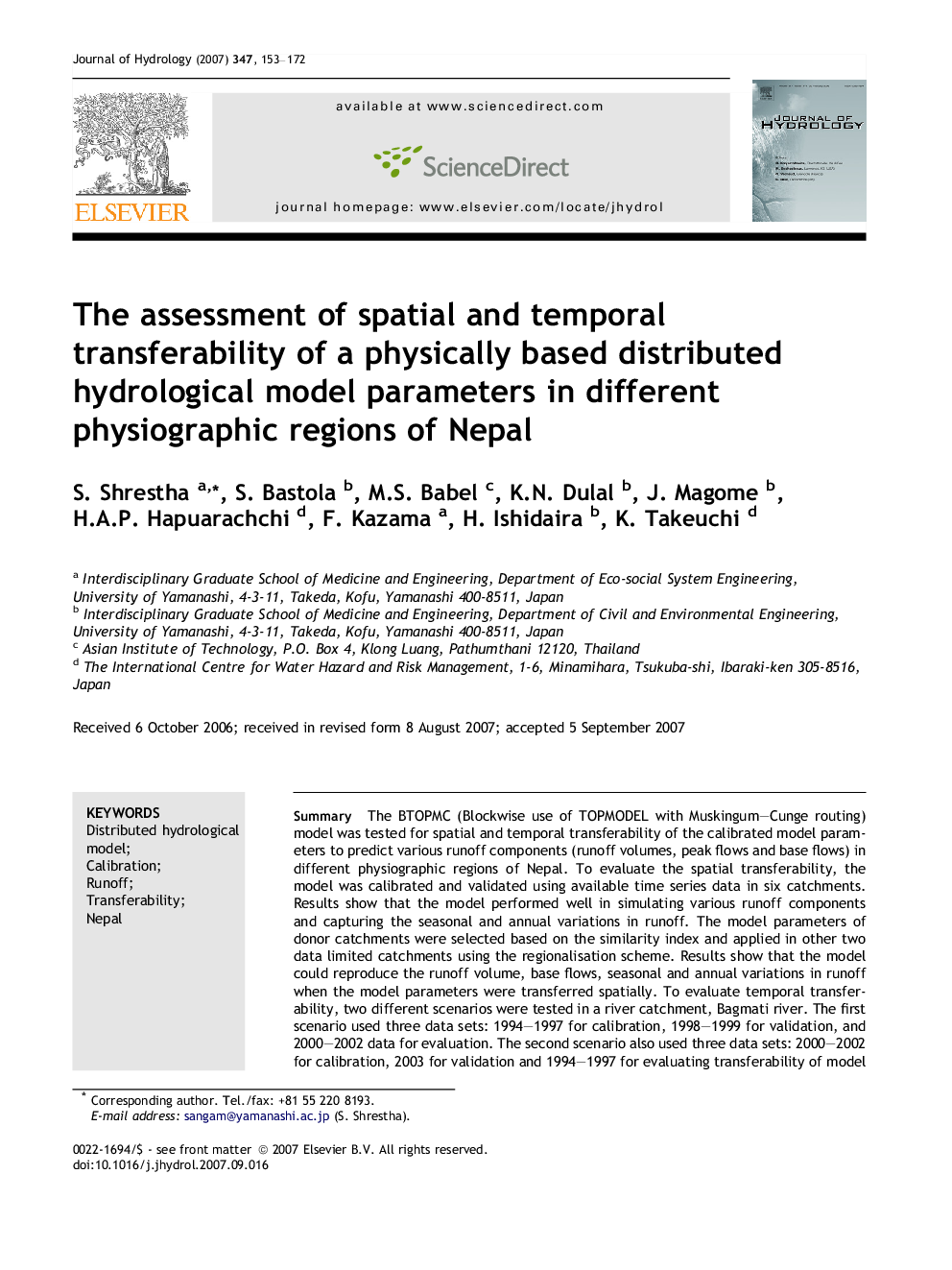| Article ID | Journal | Published Year | Pages | File Type |
|---|---|---|---|---|
| 4579651 | Journal of Hydrology | 2007 | 20 Pages |
SummaryThe BTOPMC (Blockwise use of TOPMODEL with Muskingum–Cunge routing) model was tested for spatial and temporal transferability of the calibrated model parameters to predict various runoff components (runoff volumes, peak flows and base flows) in different physiographic regions of Nepal. To evaluate the spatial transferability, the model was calibrated and validated using available time series data in six catchments. Results show that the model performed well in simulating various runoff components and capturing the seasonal and annual variations in runoff. The model parameters of donor catchments were selected based on the similarity index and applied in other two data limited catchments using the regionalisation scheme. Results show that the model could reproduce the runoff volume, base flows, seasonal and annual variations in runoff when the model parameters were transferred spatially. To evaluate temporal transferability, two different scenarios were tested in a river catchment, Bagmati river. The first scenario used three data sets: 1994–1997 for calibration, 1998–1999 for validation, and 2000–2002 data for evaluation. The second scenario also used three data sets: 2000–2002 for calibration, 2003 for validation and 1994–1997 for evaluating transferability of model parameters. Only a marginal loss in model performance was observed when calibrated parameters were transferred from one period to another period. This study therefore suggests that the calibrated parameters of BTOPMC model can be spatially and temporally transferred within river catchments located in similar physiographic regions and especially in those catchments where data is sparse. Such regionalized models can be used for hydrological simulations to study the impacts of land use and climate changes.
